It isn’t quite as mysterious as the Marfa Lights, but perhaps it is a bit more elusive. The Zodiacal Light is best viewed just after dusk in late February and early March, and is visible only from very dark skies. I managed to get some images of it in March of 2010, and I was eager to take more. The moon was near its new phase on the weekend of February 18/19, so I had a window of several days around then. Unfortunately, I didn’t have any days off from work in order to get more than 200 miles away from L.A. Ideally, I would have liked to have headed to the Death Valley area again to photograph the Zodiacal Light, but it is five hours away, and I wasn’t interested in the rushed, long drive there and back…and going back to work in Zombie Mode.
On this Sunday afternoon I was contemplating a drive to a remote area in the opposite corner of my county. Would skies be dark enough there to allow the ZL to be viewed? I live in the far southeastern part of Ventura County, not too far from the San Fernando Valley and the City of Los Angeles. Good luck seeing the Milky Way, much less the ZL, from here (unless an earthquake knocks out all of the power on a clear night). Mid- and high-level clouds were clearing out nicely and haze was not much of an issue, so around 4 p.m. I hit the road (west on the 101). My destination —- the mountainous area of extreme northwestern Ventura County, towards Ozena and Cuyama and the western edge of the Pine Mountain area. This region is fairly empty, by California standards. There is little or no civilization to the west until you get to the Santa Maria area, more than 80 miles away. Los Angeles and Bakersfield are still uncomfortably close (about 75-100 miles away, to the southeast and north-northeast, respectively), but since the ZL would be to the west and not towards any big city, this might not matter too much.
From Ventura I headed north on Route 33 through Ojai and into the mountains. The road rises to a little over 5000 feet, and the temperature fell into the 30s. The wind was a little strong in some spots—yuck. I went over the pass and down the hill to Ozena and Lockwood Valley Road. This area should work out just fine with regard to dark skies, but I found it difficult to find a good low horizon to the west. Route 33 was too close to the hills and mountains to the west. I decided to head west on Lockwood Valley Road a few miles. The horizon here was just fine, there was no traffic, and the stars were beginning to shine brightly! Best of all, there was no wind, but it was getting chilly really fast. The elevation was about 3800 ft, and it had taken about two hours to reach this spot.
I was interested primarily in getting wide angle shots to the west of the ZL, but I took several images in other directions, too. I had my Canon 5D Mark II on the tripod and took primarily exposures of 10 to 30 seconds in length at F2.8 to 3.5, ISO 800 to 1600. The stars were not tracked.
5708 (below) shows a strong hint of ZL, even though there is still light of dusk remaining. The ZL extends in a slightly slanted fashion from the middle horizon, and upward along the ecliptic (through Venus and Jupiter). It is a milky white and somewhat broad beam of light, due to sunlight reflecting off of interplanetary matter in our solar system.
About the same time, I took a shot towards the southeast (5709). The glow is due to Los Angeles and vicinity. The bright star front and center is Sirius, with Orion above and to the right. 5712 is to the north and NNW, towards the lights of Bakersfield. the Big Dipper is rising on the right-hand side. Next, 5715 looks east down the road, with the Big Dipper in the lower left, and Gemini at the top. Keep in mind that most of these are very wise angle—16mm! Below Gemini is a small fuzzy patch, called the Beehive Cluster (M44).
We are looking back to the west again and the ZL in 5717, with someone’s headlights lighting up the road. The bright stars in the upper right are part of Cassiopeia, and the fuzzy patch below and to the left of those (towards Venus) is the Andromeda Galaxy (M31). This galaxy shows up a little better in 5731 (at the top of this page).
5721 is a 35 mm shot of Orion and vicinity, with Sirius near the bottom left and the Hyades near the upper right.
5724 is another shot of the ZL, and not as wide angle as most of these (probably about 35mm). This exposure is close to how it appeared to the naked eye. It was fairly easy to detect, but was not especially obvious. A person who was not familiar with the ZL probably would not have noticed it or commented on it, as it can easily be mistaken for the last light of dusk. When I saw the ZL for the first time two years ago from Jubilee Pass in Death Valley, it was stunning and much more prominent. This evening I was more impressed with how bright Venus appeared, and I was wondering if its presence might have diminished the ZL a little. I could see my own shadow due to Venus!
Next sequentially and chronologically is 5731 (top of the page). This is likely when the ZL was at its brightest, and the exposure was extended and artificially bumped up some in PS to make the ZL more obvious (20mm, f3.5, 63 seconds, ISO 1250). 5734 is a couple of minutes later as a vehicle passed (17mm, f4.0, 75 seconds, ISO 1000). 5741 is a 32mm shot to the ESE, towards Canis Major and Sirius. The open cluster M41 is barely visible below Sirius. For fun, I brightened this one up and enlarged it and put it at the end (click it to make it even bigger–whooohoo!). 5749 is one last look to the north, at the Big Dipper and vicinity. The ZL was already fading by now (around 8:30 p.m.) and it was freezing cold (27F). Time to get outta here!

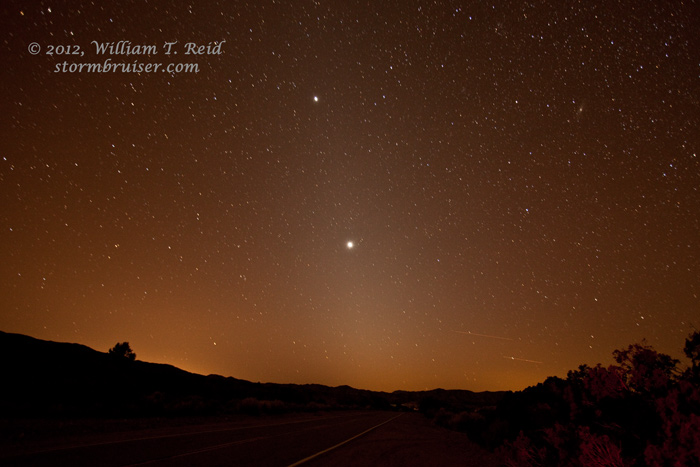
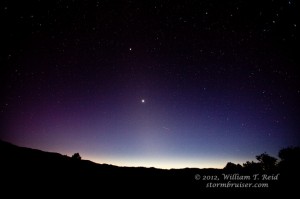
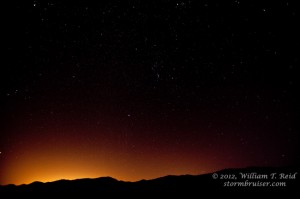
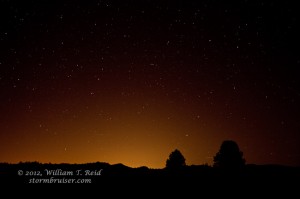
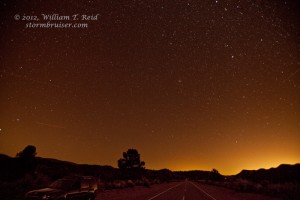
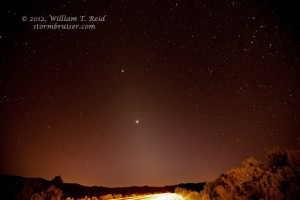

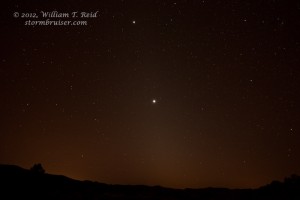
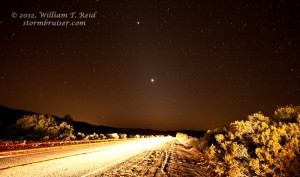
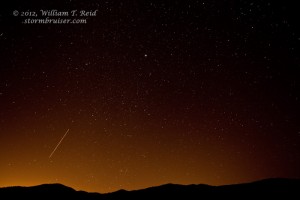

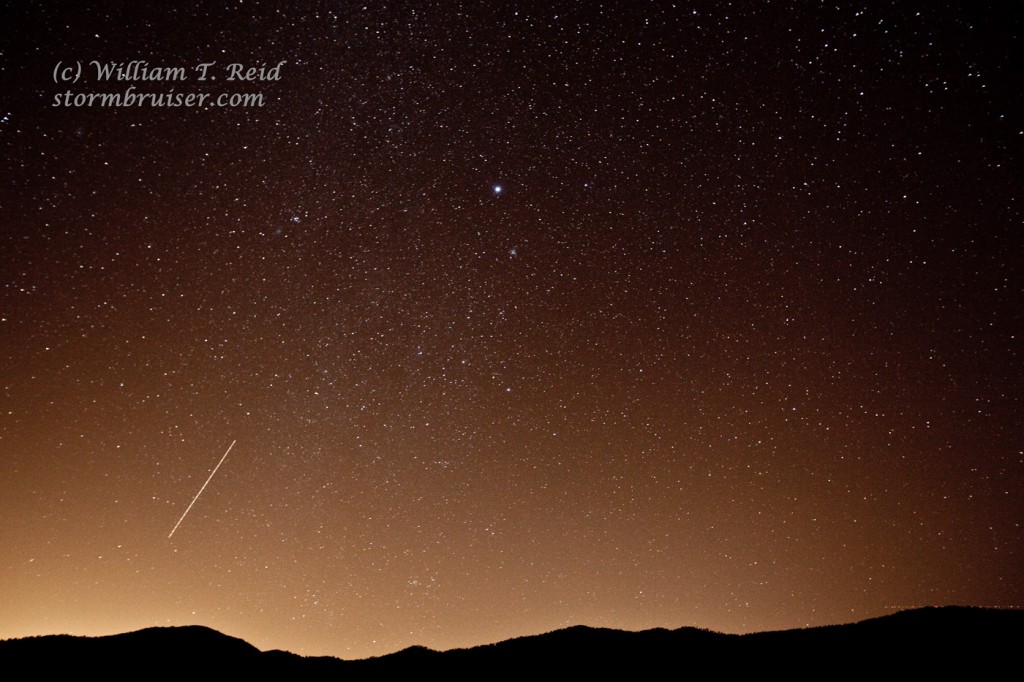
Leave a Reply
You must be logged in to post a comment.